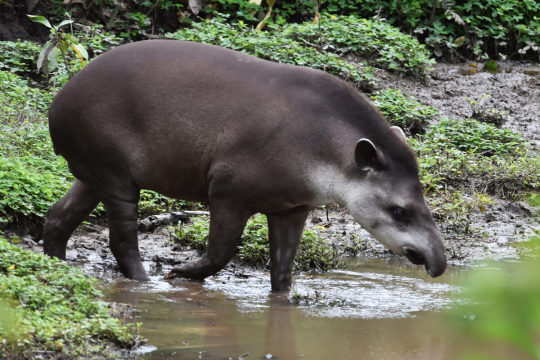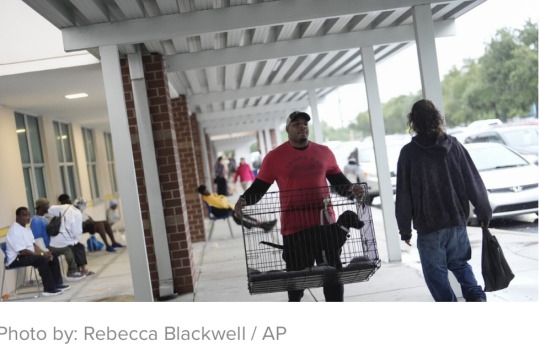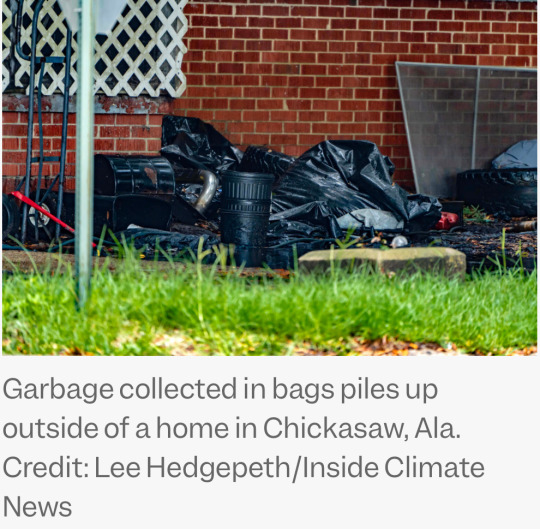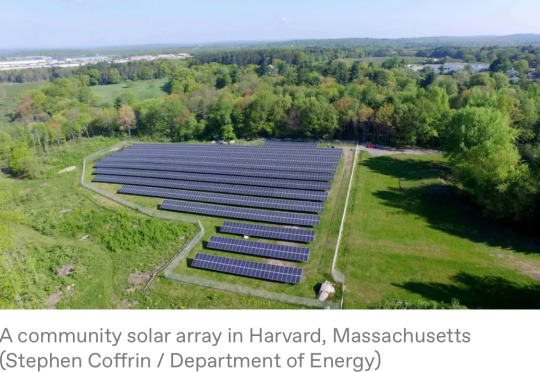#Reforestation technology
Explore tagged Tumblr posts
Text
The Future of Green Science: How Sustainable Technology Can Help You Plant Trees While You Walk
Are there any activities or hobbies you’ve outgrown or lost interest in over time?Day One Journal Prompt for the Green Scientist Introduction Sustainability and green science have never been more important. As we face increasing climate challenges, innovative solutions like Treecard allow individuals to make a real environmental impact simply by walking. Download the Treecard App available on…

View On WordPress
#Carbon offset programs#dailyprompt#dailyprompt-1843#Environmental impact#Green Science#Reforestation technology#Sustainable Fintech
0 notes
Text
Dandelion News - November 15-21
Like these weekly compilations? Tip me at $kaybarr1735 or check out my Dandelion Doodles! (sorry it's slightly late, the links didn't wanna work and I couldn't figure it out all day)
1. Wyoming's abortion ban has been overturned, including its ban on abortion medication

“Wyoming is the second state to have its near-total abortion ban overturned this month[…. Seven other states] also approved amendments protecting the right to an abortion. A lawsuit seeking to challenge the [FDA]’s approval of abortion medication recently failed when the Supreme Court refused to hear it[….]”
2. Patches of wildflowers in cities can be just as good for insects as natural meadows – study

“This study confirmed that small areas of urban wildflowers have a high concentration of pollinating insects, and are as valuable to many pollinators as larger areas of natural meadow that you would typically find rurally.”
3. Paris could offer new parents anti-pollution baby 'gift bags' to combat 'forever chemicals'

“The bag includes a stainless steel baby cup, a wooden toy, reusable cotton wipes, and non-toxic cleaning supplies as part of a "green prescription". […] The city will also have 44 centres for protecting mothers and infants that will be without any pollutants[….]”
4. Indigenous guardians embark on a sacred pact to protect the lowland tapir in Colombia

“The tapir is now the focus of an Indigenous-led conservation project[… A proposed “biocultural corridor”] will protect not only the populations and movements of wildlife such as tapirs, but also the cultural traditions and spirituality of the Inga and other neighboring Indigenous peoples[….]”
5. Denmark will plant 1 billion trees and convert 10% of farmland into forest

“[…] 43 billion kroner ($6.1 billion) have been earmarked to acquire land from farmers over the next two decades[.… In addition,] livestock farmers will be taxed for the greenhouse gases emitted by their cows, sheep and pigs from 2030, the first country to do so[….]”
6. The biggest grid storage project using old batteries is online in Texas

“[Element operates “used EV battery packs” with software that can] fine-tune commands at the cell level, instead of treating all the batteries as a monolithic whole. This enables the system to get more use out of each cell without stressing any so much that they break down[….]””
7. Durable supramolecular plastic is fully ocean-degradable and doesn't generate microplastics

“The new material is as strong as conventional plastics and biodegradable, [… and] is therefore expected to help reduce harmful microplastic pollution that accumulates in oceans and soil and eventually enters the food chain.”
8. Big Oil Tax Could Boost Global Loss and Damage Fund by 2000%

“[… A] tax on fossil fuel extraction, which would increase each year, combined with additional taxes on excess profits would […] generate hundreds of billions of dollars by the end of the decade to assist poor and vulnerable communities with the impact of the climate crisis[….]”
9. Rooftop solar meets 107.5 pct of South Australia’s demand, no emergency measures needed

“[T]he state was able to export around 658 MW of capacity to Victoria at the time[….] The export capacity is expected to increase significantly as the new transmission link to NSW[…] should be able to allow an extra 150 MW to be transferred in either direction by Christmas.”
10. Light-altering paint for greenhouses could help lengthen the fruit growing season in less sunny countries

“[Scientists] have developed a spray coating for greenhouses that could help UK farmers to produce more crops in the future using the same or less energy[… by optimising] the wavelength of light shining onto the plants, improving their growth and yield.”
November 8-14 news here | (all credit for images and written material can be found at the source linked; I don’t claim credit for anything but curating.)
#hopepunk#good news#abortion#abortion rights#reproductive rights#pollinators#guerrilla gardening#wildflowers#paris#babies#new parents#tapir#indigenous#denmark#reforestation#electric vehicles#energy storage#plastic#microplastics#biodegradable#fossil fuels#solar panels#gardening#solar energy#solar power#nature#us politics#technology#australia#uk
141 notes
·
View notes
Text
*article is dated Jan 2024
*article is dated Dec 26, 2023
*article is dated Jan 2024
*article is dated Dec 2023 (and also, the design is neat and a huge gamechanger for all reforestation efforts everywhere!)
#forests#trees#environmentalism#good news#climate change#hope#seeds#flowers#shrubs#science#drone technology#conservationism#reforestation
17 notes
·
View notes
Text
The Science of Climate Change and Technology Solutions
Introduction
Climate change, of all the challenges, is among the most critical in the modern day. With such unpredictability from variable weather patterns and global average temperature increases, the need for implementable solutions has perhaps never been so extreme. By exploring the intriguing intersection of climate-change science and innovative technology solutions, TechtoIO goes to the bottom of this global issue. Read to continue
#Science Explained#Tagsafforestation#biodiversity loss#carbon capture#climate change adaptation#climate change science#climate resilience#electric vehicles#energy efficiency#extreme weather#global warming#greenhouse effect#impacts of climate change#melting polar ice#precision farming#reforestation#renewable energy#rising sea levels#smart grids#sustainable agriculture#technology solutions for climate change#Technology#Science#business tech#Adobe cloud#Trends#Nvidia Drive#Analysis#Tech news#Science updates
1 note
·
View note
Text

0 notes
Text
When Stockholm’s Traffic Office conducted a general assessment of street traffic in the Swedish capital in 2001, it came to the shocking conclusion that two-thirds of all trees in the city center were dead or dying.
City authorities agreed that an urgent response was needed to nurse these leafy urban ecosystem pillars back to health.
Enter Björn Embrén, Stockholm’s first “tree officer.”
Under his leadership, various technologies and materials were tested in an attempt to create a more suitable living space for trees in the urban environment.
“I knew that they could grow if the circumstances were right,” says Embrén, a former professional gardener.
“It’s like putting a plastic bag over your head and tightening it over your neck,” says Embrén. “That’s what happened to the trees in Stockholm. They were dying.”
Eventually, inspired by railroad embankments — which require only a small amount of organic matter for healthy trees to grow — Embrén concocted what was to become known as the “Stockholm tree pit” model.
By 2002, Embrén had drawn up designs. And by 2003, they were already building.
The design involves digging a pit and constructing a frame underground around the tree’s roots, and then filling said pit with a mixture of soil and stone, sometimes including biochar, to both aerate and fertilize the soil. These permeable layers are very strong and physically adaptable but also allow stormwater to flow in, meaning the trees are provided with sufficient air and water naturally. They also allow rainwater to be soaked up — a necessity amid more extreme weather brought on by climate change.
“We found that the more breathable the materials we used, the happier the trees were,” adds Embrén.
Proponents say the method has a number of benefits, including the fact that pits can be installed around existing trees, they can bear the weight of heavy-vehicle traffic, they require little topsoil — a resource that is becoming scarce — and they need less watering than traditionally-planted trees.
This approach, which allows tree roots to thrive beneath hard surfacing, ergo allowing healthy trees to grow within the modern built environment, is particularly relevant as cities attempt to re-green and reforest in the face of climate change.
According to the United Nations Economic Commission for Europe, urban forests can help “future-proof” cities, which are responsible for about 75 percent of global CO2 emissions. Sustainable urban forestry, it says, can bring multiple benefits, such as lowering temperatures, improving public health, creating habitats for biodiversity, sequestering carbon, generating green jobs, and mitigating risks of floods and landslides.
“It’s more important now than ever before,” says Ryan Klein, an assistant professor in the Department of Environmental Horticulture at the University of Florida. “We have these massive populations in urban areas. And we’re seeing more extreme weather like hurricanes, wildfires and prolonged droughts. Trees can help to offset some of these negative effects.”
However, amid the rush to rapidly reforest cities, experts like Klein warn that due to ineffective methods and techniques being used, it’s common to see urban trees in poor health, and trees planted in cities often have very high mortality rates.
“We have the understanding of how to grow healthier, more sustainable and resilient forests,” says Klein. “The research backs it. Unfortunately, we don’t always invest the time, money or internal know-how on implementing this.”
A review of 16 scientific studies on urban tree mortality, published in 2019, found that in the first five years after planting, 6.6 to 7 percent of trees died annually.
“Urban soils are not very tree-friendly currently,” says Rik De Vreese, leader of the Urban Forestry Team at the European Forestry Institute. “It’s quite a serious threat.”
When trees aren’t properly anchored, De Vreese adds, it can also lead to other issues, such as trunks falling over and causing damage or roots warping sidewalks.
However, the Stockholm Tree Pit method — and the way that it’s been implemented in Sweden — is helping urban forests genuinely take root.
One of the first locations where Embrén introduced a tree pit was Erik Dahlbergsallén street in Stockholm, not far from the popular Swedish Museum of Natural History.
There, according to research by the municipality, the circumference of a selection of those planted trees increased from 30 to 35 centimeters to 70 to 83 centimeters between 2004 and 2013, even surpassing that of trees without the tree pits that have been there for more than 80 years. The latest figures from 2024 saw them reach between 100 and 136 centimeters.
“It’s easy to see how effective the pits have been,” says Embrén.
The municipality estimates that 2.3 million liters of rainwater are managed by the trees per year, and consequently, 4,600 square meters of roofs and sidewalks have been disconnected from the sewage system, reducing the burden on water treatment services.
This technique has proven so successful that it has become the standard for all other development projects in the public spaces of Stockholm. Embrén says he has been directly involved in constructing more than 3,000 tree pits, and while he has since retired, there are now three “tree officers” who have taken on the expanding role.
Britt-Marie Alvem, one of the current tree officers, estimates that the city now builds between 500 and 1,000 tree pits a year.
These days, the tree pits are also in almost every Swedish city — with a few variations.
“Some have copied and changed a little bit, like adding pumice to the stone mix,” says Embrén.
Stockholm’s tree pits are now spreading across Europe, too. In Budapest, Hungary’s capital, the tree pits can be found all over Bartók Béla Boulevard and Arany János Street. Embrén says the Spanish city of Madrid has implemented the method using local materials. And it’s become increasingly popular in the U.K.
Ben Rose, the principal arboricultural consultant at U.K. tree service Bosky Trees and the founder of Stockholm Tree Pits, a U.K.-based company that produces the equipment required to make tree pits, says that he has planted about 500 trees using the Stockholm model in the U.K. since he began in 2019, mostly as part of small-scale pilot projects.
“The approach is very suitable for use in urban situations, particularly in car parks, in plazas, and beside walkways or cycle paths,” says Rose.
Join the Reasons to be Cheerful community by supporting our nonprofit publication and giving what you can. JoinCancel anytime
Yet there are some drawbacks to the system. Installation costs can be high, the pits can require a large amount of space to install, and it is impossible to reuse existing soil. In addition, for now there is a relative dearth of professionals who know how to construct tree pits.
“Our main concern is the price,” says De Vreese, whose team is currently studying the importance of “structural soils” like those deployed by the tree pits. “Excavating the soil surrounding the tree and refilling it is no small job.”
And while Professor Klein praises the Stockholm Tree Pit’s use of structural soil and how effective it’s proven to be, he notes that the long-term success of urban forestry also relies on other factors such as the supply of high quality nursery stock and proactive tree management such as routine pruning by municipalities.
“If we don’t have these we are setting ourselves up for failure,” he says. “Some cities do the bare minimum. In the U.S.A., it’s the wild west. But others, like Stockholm, are proactive, and they have public officials seriously behind it. That’s what we need.”
By: Peter Yeung, March 4, 2025
#urban forests#urban trees#trees#tree pits#stockholm#good news#environmentalism#science#environment#nature#climate crisis#climate change#urban design#urban landscape#urban life#cityscape#city#street#streetscape#urban#soil health#reforestation
452 notes
·
View notes
Text
There is a strange idea in some environmentalist circles that human population is the main cause of ecological breakdown, and that humans have an intrinsically negative impact on ecosystems. Both claims are incorrect. First, human ecological impact is entirely a function of the system of production and provisioning. It depends on what is being produced, under what conditions, and how the yields of production are distributed. For instance, an economy that uses mostly public transit, renewable energy, multi-unit housing and plant-based protein can meet human needs with a fraction of the impact of an economy that produces a lot of SUVs, fossil fuels, mansions and industrial beef, and which allocates a bunch of totally unnecessary production to service the fantasies of overconsuming elites. Remember, we know it is possible to provide decent living standards (DLS) for 8.5 billion people with 30% of current global energy and material use, by ensuring efficient technologies and focusing production on socially necessary goods and services. That much is fairly straightforward. But one might say that, even so, every person will always have some negative impact. This too is incorrect. Again, it depends entirely on the production system, and specifically, what people are mobilized to do. Under capitalism, labour is mobilized overwhelmingly to produce things that are profitable to capital. But labour could just as easily be mobilized instead for regeneration. Using straightforward public finance mechanisms, we can fund massive programmes to reforest barren lands, regenerate degraded ecosystems, restore biodiversity, advance agroecological methods, etc. Under these conditions, it is possible for societies to not only have minimal negative impact on ecology, but to have a net-positive impact, actively improving ecological indicators. People buy into the myth of the intrinsic destructiveness of humans because we have come to take capitalism for granted. But it is 100% possible to organize production and labour differently. Under capitalism, we are compelled to produce whatever is most profitable to capital, even if it is destructive to humans and nature. Under conditions of economic democracy, we can produce what we know is necessary for well-being and ecology.
Jason Hickel
See this paper for the "decent living standards (DLS) for 8.5 billion people with 30% of current global energy and material use" stat
314 notes
·
View notes
Text
Often, the dominant image of natural carbon sequestration is a vast forest canopy, but while reforestation is vital, it is not the most stable long-term carbon sink. Carbon stored in trees is vulnerable: wildfires release carbon as CO₂, and storms cause fallen trees to decompose, feeding microbes that respire carbon back into the atmosphere. To build resilient carbon sequestration systems, we must expand our focus to other ecosystems—such as grasslands sustained by herd animals.
The Role of Herd Animals in Grassland Ecosystems
Restoring and expanding grasslands means dedicating more land to herd animals like bison (North America), wildebeest and antelope (African savannas), reindeer and caribou (Arctic tundra), and elephants (Africa and parts of Asia). Trophic rewilding reestablishes the intricate food webs that sustain these ecosystems. Through grazing, trampling, and nutrient cycling, herd animals regenerate grasslands, making them powerful carbon sinks.
Unlike forests, where carbon is stored in above-ground biomass, grasslands primarily store carbon underground. Their deep-rooted perennial grasses sequester carbon in subsoil and humus, a highly stable form of organic matter that can last centuries or millennia. While tree roots also store carbon, they eventually decompose upon deforestation, releasing CO₂. Conversely, grasslands continuously build soil carbon through root growth and turnover, making them a more enduring carbon sink.
How grazing enhances soil carbon storage
Grazing by herd animals facilitates long-term carbon storage in several ways:
Increased Root Turnover – When grasses are grazed, they shed fine roots, which decay and contribute to humus formation, locking carbon into the soil.
Boosted Microbial and Fungal Activity – Manure, dead roots, and trampled plant material provide organic inputs that fuel microbes, which convert carbon into stable soil compounds.
Stabilized Carbon in Soil Aggregates – Organic matter binds with soil minerals, forming stable aggregates that slow decomposition and protect stored carbon from being released.
#solarpunk#solar punk#indigenous knowledge#reculture#ecosystems#grasslands#herd animals#carbon capture#climate change#environment
33 notes
·
View notes
Text
RideBoom has implemented several sustainability measures to reduce its environmental impact compared to Uber and Ola. Some of these measures include:
Electric and Hybrid Vehicles: RideBoom has introduced electric and hybrid vehicles into its fleet, which reduces greenhouse gas emissions and noise pollution. This is a unique feature among ride-sharing apps, as most companies rely on traditional fossil-fuel powered vehicles.
Carpooling: RideBoom offers carpooling services, which allow multiple passengers to share rides and reduce the number of vehicles on the road. This not only reduces emissions but also helps to alleviate traffic congestion.
Route Optimization: RideBoom uses advanced route optimization technology to reduce the distance traveled by its vehicles. This helps to reduce fuel consumption, emissions, and wear and tear on the vehicles.
Sustainable Fleet Management: RideBoom has implemented a sustainable fleet management system that ensures all vehicles are properly maintained, which reduces emissions and extends the life of the vehicles.
Carbon Offset: RideBoom has partnered with carbon offset providers to offset the carbon emissions from its operations. This means that for every ton of CO2 emitted, RideBoom invests in projects that reduce greenhouse gas emissions, such as reforestation or renewable energy generation.
Vehicle Scrappage: RideBoom has implemented a vehicle scrappage program, which encourages drivers to retire older, polluting vehicles and replace them with newer, cleaner ones. This helps to reduce emissions and improve air quality.
Driver Training: RideBoom provides training to its drivers on eco-friendly driving practices, such as reducing speed, accelerating smoothly, and avoiding idling. This helps to reduce fuel consumption and emissions.
Partnerships: RideBoom has partnered with local organizations and government agencies to promote sustainable transportation options and reduce emissions in urban areas.
In comparison, Uber and Ola have also implemented some sustainability measures, but they are not as comprehensive as RideBoom's. For example:
Uber has introduced electric and hybrid vehicles into its fleet, but it has not set a target for transitioning to 100% electric vehicles.
Ola has also introduced electric and hybrid vehicles, but its sustainability efforts are more focused on promoting electric vehicles in India.
Both Uber and Ola have implemented carpooling services, but they are not as widespread as RideBoom's carpooling program.
Overall, RideBoom's sustainability efforts are more comprehensive and targeted toward reducing emissions and promoting eco-friendly practices in the ride-sharing industry.
#rideboom#rideboom app#delhi rideboom#ola cabs#biketaxi#rideboom taxi app#uber#ola#uber driver#uber taxi
22 notes
·
View notes
Text
There is a strange idea in some environmentalist circles that human population is the main cause of ecological breakdown, and that humans have an *intrinsically* negative impact on ecosystems. Both claims are incorrect. First, human ecological impact is entirely a function of the system of production and provisioning. It depends on what is being produced, under what conditions, and how the yields of production are distributed. For instance, an economy that uses mostly public transit, renewable energy, multi-unit housing and plant-based protein can meet human needs with a fraction of the impact of an economy that produces a lot of SUVs, fossil fuels, mansions and industrial beef, and which allocates a bunch of totally unnecessary production to service the fantasies of overconsuming elites. Remember, we know it is possible to provide decent living standards (DLS) for 8.5 billion people with 30% of current global energy and material use, by ensuring efficient technologies and focusing production on socially necessary goods and services. That much is fairly straightforward. But one might say that, even so, every person will always have some negative impact. This too is incorrect. Again, it depends entirely on the production system, and specifically, what people are mobilized to do. Under capitalism, labour is mobilized overwhelmingly to produce things that are profitable to capital. But labour could just as easily be mobilized instead for regeneration. Using straightforward public finance mechanisms, we can fund massive programmes to reforest barren lands, regenerate degraded ecosystems, restore biodiversity, advance agroecological methods, etc. Under these conditions, it is possible for societies to not only have minimal negative impact on ecology, but to have a net-positive impact, actively improving ecological indicators. People buy into the myth of the intrinsic destructiveness of humans because we have come to take capitalism for granted. But it is 100% possible to organize production and labour differently. Under capitalism, we are compelled to produce whatever is most profitable to capital, even if it is destructive to humans and nature. Under conditions of economic democracy, we can produce what we know is necessary for well-being and ecology.
—Dr. Jason Hickel
7 notes
·
View notes
Text
Rio de Janeiro bay reforestation shows mangroves’ power to mitigate climate disasters

At the rear of Rio de Janeiro’s polluted Guanabara Bay, thousands of mangroves rise as tall as 13 feet (about 4 meters) from a previously deforested area.
The 30,000 trees, planted by non-profit organization Instituto Mar Urbano over four years in the Guapimirim environmental protection area, stand as an example for cities seeking natural means to improve climate resilience.
Such ecosystems are vital for protection against floods that have become increasingly frequent around the world. Brazil’s southern state of Rio Grande do Sul is still reeling from a devastating flood earlier this month that wreaked havoc and took lives, with waters far from subsiding to normal levels.
Mangroves slow sea water’s advance into riverbeds during storm surges by soaking it up, and protects the land by stabilizing soil that otherwise could be washed away. They also act as a carbon sink. The reforestation in Rio’s bay improved the cleanliness of water that’s a breeding ground for marine species. Crabs have returned, providing extra income for the local crab pickers who helped plant the trees.
“To plant a tree in this mangrove is an act of environmental recovery and also an act in the fight against climate change,” Ricardo Gomes, a director at the non-profit, told The Associated Press on Thursday. “Today we can be sad, because of all that has been lost (in Brazil’s South), all that was destroyed. But we never had so much knowledge, so much technology and resources to recover our environment.”
Continue reading.
#brazil#brazilian politics#politics#environmental justice#mod nise da silveira#image description in alt
26 notes
·
View notes
Text
Dandelion News - October 8-14
Like these weekly compilations? Tip me at $kaybarr1735 or check out my Dandelion Doodles on Patreon!
1. All 160 dogs at Florida shelter found homes ahead of Hurricane Milton

“[The shelter] offered crates, food and anything else the dogs would need in exchange for the animals to spend just five days with the foster parents if the human didn't want to keep them for longer. […A]fter about a day of receiving around 100 messages every 30 minutes, Bada said, all 160 were gone from the shelter and in safe and warm homes.”
2. Restoring Ecosystems and Rejuvenating Native Hawaiian Traditions in Maui

“[Volunteers] are restoring water flow to the refuge, removing invasive species, and restoring a loko iʻa kalo using ʻike kūpuna, ancestral knowledge. […] This human-made ecosystem will provide food for community members and habitat for wildlife while protecting coral reefs offshore.”
3. Solar-powered desalination system requires no extra batteries

“In contrast to other solar-driven desalination designs, the MIT system requires no extra batteries for energy storage, nor a supplemental power supply, such as from the grid. […] The system harnessed on average over 94 percent of the electrical energy generated from the system’s solar panels to produce up to 5,000 liters of water per day[….]”
4. Threatened pink sea fan coral breeds in UK aquarium for first time

“The spawning is part of University of Exeter Ph.D. student Kaila Wheatley Kornblum's research into the reproduction, larval dispersal and population connectivity of Eunicella verrucosa. […] Pink sea fans are believed to have been successfully bred by only one other institution, Lisbon Oceanarium, in 2023.”
5. Tiny 'backpacks' are being strapped to baby turtles[….]

““We analysed the data and found that hatchlings show amazingly consistent head-up orientation – despite being in the complete dark, surrounded by sand [… and] they move as if they were swimming rather than digging[…. This new observation method is] answering questions about best conservation practices,” says Dor.”
6. New California Law Protects Wildlife Connectivity

“A new state law in California will instruct counties and municipalities to conserve wildlife corridors when planning new development. […] This could entail everything from creating wildlife crossings at roads or highways, employing wildlife-safe fencing, or not developing on certain land.”
7. ‘I think, boy, I’m a part of all this’: how local heroes reforested Rio’s green heart

“By 2019, [the program] had transformed the city’s landscape, having trained 15,000 local workers like Leleco, who have planted 10m seedlings across […] roughly 10 times the area of New York’s Central Park. Reforested sites include mangroves and vegetation-covered sandbars called restinga, as well as wooded mountainsides around favelas.”
8. Alabama Town Plans to Drop Criminal Charges Over Unpaid Garbage Bills

““Suspending garbage pickup, imposing harsh late penalties and prosecuting people who through no fault of their own are unable to pay their garbage and sewage bills does not make payment suddenly forthcoming,” West said. [… The city] has agreed to drop pending criminal charges against its residents over unpaid garbage bills.”
9. New Hampshire’s low-income community solar program finally moves forward

“The state energy department is reviewing seven proposals for community solar arrays that will allocate a portion of their bill credits to low-income households. […] New Hampshire’s strategy of working with utilities to automatically enroll households that have already been identified streamlines the process.”
10. The Future Looks Bright for Electric School Buses

“EPA has awarded about $3 billion in grants from the infrastructure law, which paid to replace about 8,700 buses. Of those, about 95 percent are electric. [… Electric buses are] cheaper to operate and require less maintenance than diesel buses and will soon be at cost parity when looking at the lifetime cost of ownership[….]”
October 1-7 news here | (all credit for images and written material can be found at the source linked; I don’t claim credit for anything but curating.)
#hopepunk#good news#dogs#hurricane milton#florida#animal shelters#foster dog#hawaii#hawaiʻi#maui#solar#water#solar energy#coral#endangered species#coral reef#turtles#sea turtle#technology#wildlife#habitat#nature#california#rio#south america#reforestation#poverty#anti capitalism#solar panels#electric vehicles
200 notes
·
View notes
Text


The Solutions Are Already Here: Ecological Revolt from Below By: Peter Gelderloos London: Pluto Press, 2022
Half-Earth Socialism: A Plan to Save the Future from Extinction, Climate Change and Pandemics By: Troy Vettese and Drew Pendergrass London: Verso Books, 2022
At a time when much climate literature emphasizes inadequate “deals” with capitalism or catastrophe-prone nuclear and geoengineering technologies, it’s refreshing to read two uncompromising proposals for ecological revolution. Despite coming from different political traditions, anarchist and Marxist, they reach overlapping conclusions regarding the necessity to reject elites’ false solutions, reduce global production, support participatory planning, and establish healthier relations with nonhuman beings. With solutions at hand, and the dead-ends increasingly obvious, the ways forward appear to be getting clearer.
Solutions Abound
First, Peter Gelderloos’s The Solutions Are Already Here: Ecological Revolt from Below, is a cartography of movements resisting extraction, growing local food, and restoring ecosystems. Compared to the ecocidal ruling class and its spurious opposition among the mainstream left, autonomous uprisings can be remarkably effective using a minimum of resources. Based on extensive research and interviews, Gelderloos demonstrates that this web of struggle “represents the best hope for our planet” (146), should it further scale up and coordinate efforts.
He discusses, for example, Mexico’s town of Cherán where P’uerépecha residents militantly rose up in 2011 and kicked out loggers, drug cartels, police, and politicians. Ever since, they have self-governed using horizontal methods of popular assembly and communal mediation (127). Volunteer patrols, accountable to popular councils, confiscate chainsaws from unauthorized loggers and monitor that farmers follow the ban on growing water-intensive avocado trees for commercial purposes. The town has implemented one of Mexico’s most advanced recycling programs, and with help from an impressive tree nursery, they’ve reforested over half of the previously deforested area.[1]
Gelderloos discusses how various communities grow their own food. We read of Brazil’s Teia dos Povos network which has reclaimed large territories and grown enough food to live on. Its farmers are generally either practicing or transitioning to agroecology (110). Also in Brazil, Tupi-Guaraní communities, with support from anarchists in Cultive Resistência, are recovering and restoring land that’s been damaged by mining. They meet daily needs with their own harvests, including sweet potatoes, cassava, and fruit (116). The Solutions Are Already Here describes sizable urban farming and gardening projects established by horizontally run communes, including the Canary Islands’ La Esperanza, South Africa’s Abahlali baseMjondolo, and Mississippi’s Cooperation Jackson (134, 141, 144).
Like the radical ecological movement itself, the book’s strongest suit regards blockades of extractive projects. Gelderloos interviews an anarchist involved in the Dayak tribes’ struggles against oil palm plantations. Blocking roads and seizing heavy equipment, the Dayak have halted land clearing, at least for now, in the Lamandau Regency, on the island of Kalimantan (Borneo), Indonesia (91). When covering more well-known blockades, such as France’s ZAD, Gelderloos criticizes how reformist elements defanged the movement shortly after it successfully stopped a planned airport (93–102).
Had it been a longer book, Solutions likely would have discussed other contemporary eco-societies, such as Sri Lanka’s Sarvodaya Shramadana Movement, Mexico’s Zapatistas, Syria’s Democratic Confederalists, and Brazil’s Landless Workers Movement, in addition to countless other localities maintaining Indigenous and traditional practices of sustainability. It also might have argued for the importance of global cooperation through bottom-up federations like La Via Campesina, Global Ecovillage Network, and the International Workers’ Association.[2]
Gelderloos does not dwell much on the technological aspects of solutions, but the relatively low-tech future he envisions could easily be powered with small-scale renewables. He imagines decentralized production of wind turbines and tin-based perovskite solar cells, land transportation by electric-powered trains and buses, and ocean transportation by expropriated sailboats and yachts. His apparent support for bioenergy is less convincing (177, 188). Not only does all bioenergy emit toxins and carbon dioxide, but Gelderloos’s proposed burning of agricultural residue is even dirtier than burning trees.[3] He also seems to support spreading biochar in fields, an understudied practice that risks emitting airborne particulate matter and negatively impacting plant growth.[4]
Gelderloos calls, in short, for “the networking of thousands of empowered territories” that can survive, outlast, and replace the dying capitalist system (199). However ambitious this sounds, it beats waiting for improbable salvation from CEOs and presidents.
#climate crisis#book review#Climate Justice#total liberation#anarchism#anarchy#anarchist society#practical anarchy#practical anarchism#resistance#autonomy#revolution#communism#anti capitalist#anti capitalism#late stage capitalism#daily posts#libraries#leftism#social issues#anarchy works#anarchist library#survival#freedom#Dan Fischer
4 notes
·
View notes
Text

Kaia on ko-fi has a blind date with...
Stelios the Centaur
Stelios has the lower body of a chestnut draft horse and the upper half of a muscular, redheaded human man with lots of freckles. He works as a ranger in a large, mountainous wilderness park, and takes his job very seriously. He is always rescuing lost hikers and tending their injuries, and sometimes scaring off bears! He carries emergency medical and food supplies in his saddlebags and always has a helping hand at the ready.
Ecology is Stelios’ primary hobby, and it’s not just for work. He is very passionate about reforesting now-barren former woodland and getting rid of invasive species. He can talk for hours about it, but also wants to hear about your own interests and passions. He understands what it feels like to realize that you’re the only person in the room who truly cares about a particular subject, and knows how to push forward against other peoples’ indifference.
Stelios loves gaming, but unfortunately rarely has time for it due to the nature of his work. He’s easily frustrated by technology and prefers tabletop games to video games (and yes, his D&D characters are primarily druids). When you invite him to a TTRPG session, he makes every effort to clear his schedule and come to the event; he wants to make more friends.
Stelios drinks a lot of coffee… maybe too much. Although he isn’t picky about what kind of coffee he drinks, he makes a point of avoiding chain coffeeshops and tries to support small businesses in his area, especially ones owned by queer folks or else that are havens for marginalized people.

CW for giant arachnid (scorpion) + use of firearms
“Get on my back,” the centaur wearing a ranger’s jacket mutters to you.
“Why?” you mutter back, although you are nonetheless already very close to the centaur’s flank in the steep-sided, marshy gully.
“It’s doing a threat display,” the ranger explains, eyeing the giant swamp scorpion with its enormous, snapping pincers and venom-dripping stinger, “we don’t have much ti—”
The massive arachnid rushes forward at you, its legs thudding into the soft ground. You hoist yourself up onto the centaur’s back faster than you thought possible outside of an adrenaline-fueled emergency, and the centaur wheels around and gallops as fast as he can away from the threat—but not fast enough. The boggy terrain is slowing him down, and the swamp scorpion’s wide, flat feet help it move more quickly.
You pull a pistol out of the holster at your hip, twisting on the ranger’s equine back to fire off a few shots at the scorpion. Even on the back of a struggling centaur, your aim is true, and black ichor gushes from the scorpion’s new injuries. It squeals and twitches in pain, slowing down just long enough for the centaur to reach the end of the gully and start climbing up a slope onto firmer ground. Unwilling to leave its lair, the swamp scorpion remains behind to nurse its wounds.
“You could have used that a little sooner,” the centaur grumbles. “The noise of a few shots might have scared it, at least.”
“I don’t have a permit to hunt scorpions,” you explain. “I wasn’t sure I was allowed to shoot that thing.”
“You would have been in luck if you’d tried—they’re invasive, so we would pay you rather than the other way around—and self-defense is a valid defense against being fined. I’m Stelios, by the way.”
You introduce yourself as well, and Stelios lets you hitch a ride back to the nearest ranger station. Along the way, he offers some suggestions for how to replace your lost hiking and camping gear more cheaply, and you have a good time chatting with him and swapping emergency medical treatment tips. Once at the ranger station, the swamp scorpion’s lair is reported so that a better-equipped team can handle the giant arachnid, and a kindly human ranger offers you a ride in an ATV back to the park’s main entrance.
All in all, it turned out to be a pretty fun-filled day.

see here if you'd like your own blind date with a monster!
#monster romance#monster lover#sage's monster matches#terato x reader#terato#monster x reader#gender neutral reader#reader insert#x reader
50 notes
·
View notes
Text
For Immediate Release New York City, July 12
New York Celebrates Avengers' Environmental Initiative
NEW YORK CITY - In an unexpected but widely celebrated move, the Avengers have announced a groundbreaking initiative aimed at tackling climate change and promoting sustainability across the globe. Spearheaded by Tony Stark, the project seeks to leverage advanced technology and the Avengers' considerable resources to combat environmental degradation.
"This isn't just about fighting villains anymore," said Stark at a press conference held at Avengers Tower. "We're facing an existential threat, and it's time for us to step up and protect the planet we call home."
The initiative, dubbed "Green Horizon," focuses on several key areas: renewable energy development, ocean cleanup efforts, reforestation projects, and the reduction of carbon emissions. Stark Industries has committed to transitioning all its facilities to run on 100% renewable energy within the next five years.
Joining Stark in this ambitious endeavor are Bruce Banner, also known as the Hulk, who will lend his expertise in scientific research, and Thor, who plans to utilize Asgardian technology to aid in environmental restoration efforts. Banner emphasized the importance of using science and innovation to address the crisis, stating, "We have the tools and the knowledge to make a significant impact. Now, it's about putting them to use for the greater good."
Public response to the Avengers' new mission has been overwhelmingly positive. Environmental groups have lauded the initiative as a major step forward, while citizens are inspired by their heroes' commitment to a sustainable future.
"This is exactly what we need," said Lorraine Simmons, a climate activist based in New York. "The Avengers have always protected us from threats. It's incredible to see them take on the fight against climate change."
However, not everyone is on board. Critics argue that the Avengers should stick to their traditional role of battling supervillains and leave environmental issues to established organizations. Despite this, Stark remains undeterred.
"Protecting the planet is the ultimate mission," Stark declared. "We're in this for the long haul."
As the Avengers embark on this new chapter, the world watches with hopeful eyes. Their efforts may not only save the planet but also inspire a global movement towards a more sustainable and resilient future.
Contact:
Mark Johnson Director of Public Relations Stark Industries (555) 987-6543 [email protected]
*****
About Stark Industries: Stark Industries is a global leader in innovation and technology, specializing in aerospace, defense, and sustainable energy solutions. With a commitment to pushing the boundaries of what's possible, Stark Industries is dedicated to making the world a better place through innovation and ingenuity.
#daily bugle#j jonah jameson#jj jameson#jjj#the daily bugle#marvel#marvel comics#marvel mcu#marvel cinematic universe#mcu#tony stark#ironman#iron man#the avengers#avengers#bruce banner#hulk#incredible hulk#the hulk#thor odinson#thor
13 notes
·
View notes
Text
17 Apr 2025------
The tree growth acceleration technology - potentially boosting forest growth by 30 percent - has been developed by Funga PBC, and works by returning native fungal communities to tree roots before planting. These essential fungi were naturally present in forest soils but have vanished due to modern land management practices.
Scientists know that trees and fungi form a vital partnership in healthy forests because fungi create vast underground networks of microscopic threads called mycelium around tree roots. These fungal networks help trees absorb water and crucial nutrients like phosphorus and nitrogen from the soil.
In return, trees share up to 30 percent of the sugars they make through photosynthesis with their fungal partners. This exchange has evolved over millions of years, creating what scientists call a “mycorrhizal network”. These networks connect trees of different species, allowing them to share resources. Older, larger trees often support younger saplings through these fungal connections.
The accelerated tree growth has significant implications for fighting climate change. According to Funga’s field trials, forests with restored fungal communities can capture up to 40 percent more carbon dioxide annually compared to conventional plantings.
“Funga’s method could create planet-shaping impact,” says Dan Lambe, chief executive of the Arbor Day Foundation.
#good news#environmentalism#science#environment#reforestation#fungi#microbiology#microbiomes#tree growth acceleration#climate crisis#climate change#nature#forests#rainforests#mushrooms#mycology#fungus#conservation#climate action#climate hope#global climate change#climate activism#climate#climate and environment#climate emergency#climate justice#climate science#climate solutions#mycelium
52 notes
·
View notes